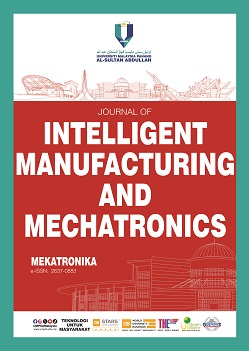Application of Mahalanobis-Taguchi System in Rainfall Trends at UMP Gambang Campus
DOI:
https://doi.org/10.15282/mekatronika.v5i2.9581Keywords:
Mahalanobis-Taguchi system, Mahalanobis distance, Rainfall, Classification, OptimizationAbstract
Rainfall is a variable meteorological phenomenon that exhibits spatial variability across different locations. Weather stations collect a wide range of parameters to monitor and analyze rainfall patterns. However, not all parameters are equally significant or efficient in performing classification and optimization tasks. In this study, we propose the use of the Mahalanobis-Taguchi system (MTS) method to classify rainfall occurrences by RT-Method and optimize the parameter selection process by T-Method. The data were collected by weather station Vantage Pro2 in UMP Gambang. By applying RT- Method, we can classify the data sample in term of MD for November, May and April while reducing the number of parameters to only those that significantly contribute to the classification, which from 16 parameters to 8 parameters using T-Method. This approach provides a streamlined and efficient methodology for analyzing rainfall patterns and optimizing weather station data collection processes.
Downloads
Published
Issue
Section
License
Copyright (c) 2023 Universiti Malaysia Pahang Al-Sultan Abdullah Publishing

This work is licensed under a Creative Commons Attribution-NonCommercial 4.0 International License.




